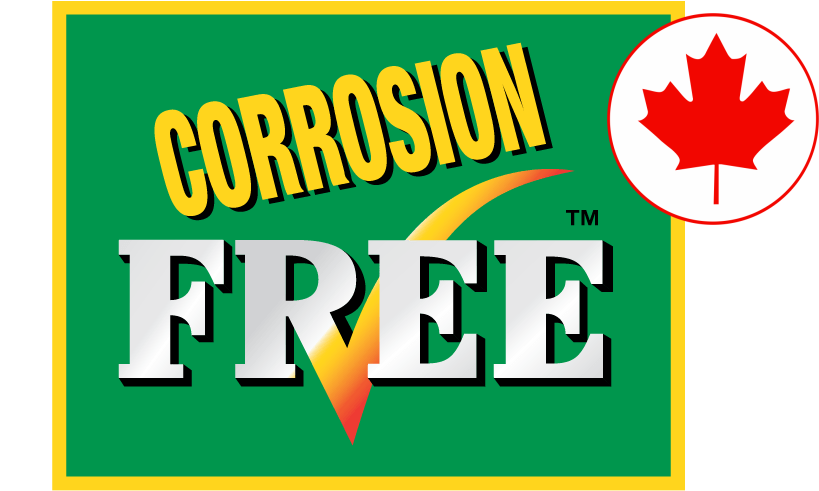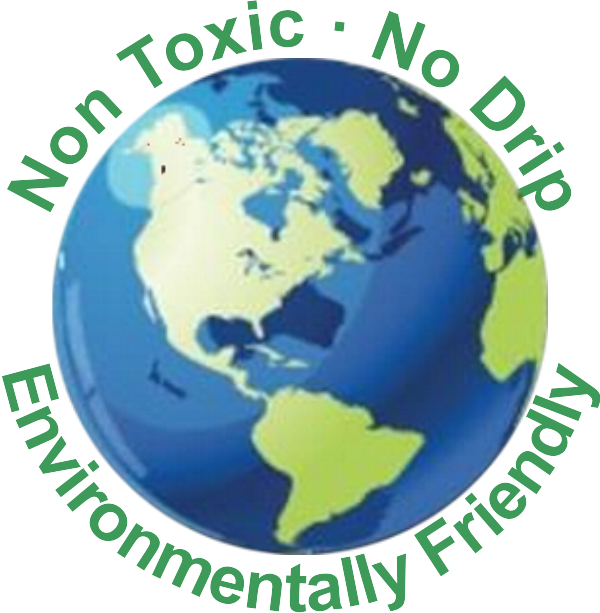General
The efficiency of Corrosioon Free ™ use has been proved since the year of 1986, both for the new and the second-hand cars, including construction and agricultural engineering, industrial application of Corrosioon Free ™ as well as in manufacturing industry, mechanical engineering and electronics.
- Careful drying of treated surface is not required.
- Penetrates welded joints and chambers where corrosion starts, continues to take effect for long time, protecting structural components of treated material.
- Can be used for treatment of any corrosion pits on steel, cast iron, aluminum, copper; protects plastic and rubber from erosion.
- Spreads to all hard-to-get-to spots of treated metal, displaces and replaces moisture and stops corrosion.
- Lubricates locks, window and door closers, friction parts.
- Economic, ecologically safe and non-toxic.
- Free of solvents and harmful additives.
- Treatment duration is two – three hours in your presence.
- Regular application almost completely inhibits corrosion.
Unique lubrication properties of Corrosioon Free ™:
1. Protection of electric connections.
2. Protection from freezing and sticking of locks and latches.
3. Prevention of bolt acidizing.
4. Squeak elimination and lubrication of hinges and wire cables.
5. Treatment of external corrosive surfaces or spots of metal-to-metal contact is permissible. The similar is impossible where barrier type remedies are applied.
How Corrosioon Free ™works
The most intensive corrosion-prone car areas include spot welds, sills, spars, wheel housing, underbody, etc. Therefore, protective agent should be able to penetrate all such spots and ensure constant protection. Those properties were used as a basis of the method known as rust protection “Formula 3000”, developed in Canada.
As already mentioned, this method differs fundamentally from other methods by the following characteristics:
- Technological application of “Formula 3000” rust protection includes no elaborate surface preparation, drying, coating in several layers, etc.;
- Protection materials are based on highly refined oils and contain several additives. Materials used exhibit characteristics of high degree of penetration, moisture displacement as well as protective properties and property of rust inhibition;
- These materials are constantly in active state, they remain liquid, that allows a protective film, that appears on the metal surface after the treatment, not only to become an insulating barrier but a reservoir for corrosion inhibitors molecules;
- Material substances migrate over metal surface, liquidating corrosion pits that appear in course of operation activity;
- Components of material exhibit rather high vapour density to saturate concealed chambers with its molecules, followed by chemisorption* on metal surface; Everything ststed above allows us to fully eliminate negative moments, characteristic of traditional corrosion-protection methods.
*Chemisorption (chemical absorption) – intake of substances from external environment by liquid or solid body, accompanied by formation of chemical compounds.
Negative characteristics of traditional methods:
- Moisture-sealing property of materials based on bitumen, resins and paraffins;
- Checking of solid films while in operation, resulting in occurrence of corrosion pits;
- Sensitive technologies of traditional coating methods, which require careful wash, drying, cleanup and multi-layer coating, etc.
Chemical reaction of metal with “Formula 3000”
“Formula 3000” is applied onto metal surface. On the first stage, molecules of inhibitors* and water-repellents** diffuse*** to metal surface. A part of them is absorbed (soaks into) metal surface, a part displaces moisture, saline solutions, rust from the surface. Monomolecular (one molecule thick) inhibitor layer is formed. Next, polymolecular inhibitor layers are formed on metal surface. When defect appears in protective film, active inhibitor molecules migrate to free metal surface, and formation of protective layer is repeated.
*Inhibitor — substance, inhibiting or preventing a chemical reaction course: corrosion of metal, ageing of polymers, oxidizing of fuel, etc. **Water-repellents — substances that give water-repellent properties to materials. ***Diffuse — amalgamate, mix.
How “Formula 3000” differs from mastics
Corrosion-resistant materials that belong to the class of mastics, greatly depend on preparation degree of machinery, their surface should be dry, clean and free of corrosion, which is unachievable in car service centre conditions.
One cannot control or see what is happening with with a durable and undamaged coating concealed under mastics.
Sooner or later even the best mastics will crack as a result of drying and mechanical damages. Loose rust will be only visible when mastics layer peels off. Guarantee against mastics works is given for the invisible work quality that cannot be checked.
What are the main differences compared to traditional methods?
— In the first place, “Formula 3000” penetrates and completely protects welded joints and concealed chambers, fills in all tiny micro-cracks in paint and metal, displacing moisture.
— “Formula 3000” materials shall not solidify, but remain in semi-liquid state, and thus fill in any appearing cracks, it features steady and very strong cohesion with treated metal on molecular level. Spars, sills, jacking eyelets, floor braces — the things that are usually taken for ‘rusty underbody’ — plus complete underbody from bonnet to boot are all examples of concealed chambers and welded joints. Active chemical additives in “Formula 3000” that prevent corrosion are much stronger due to their semi-liquid state. “Formula 3000” inhibitors stop corrosion by weakening cohesion of loose rust with metal, displacing it from surface and making transfer into passive metal, unexposed to oxidation reaction, i.e. corrosion.
— Semi-liquid state and water-repellent property of “Formula 3000” allows to skip drying and careful cleaning of surface – anyway, it is impossible – but simply to wash underbody and let condensed moisture flow down. Therefore, “Formula 3000” guarantees the product application quality, which results in corrosion-protection of any car, military machines, electronic devices in humid conditions, also, industrial corrosion-prone objects. Treatment results in absence of rust. Of course, nothing lasts forever, the treatment should be regularly repeated after 18-36 months of run.
— “Formula 3000”, differently from traditional stuff, is fire-safe, non-toxic and ecologically clean. “Formula 3000” is an ideal agent for protection of new and second-hand means of transport, and: industrial equipment, agricultural machinery, military machines, buses, trams, electric motor vehicles on rail roads, bridges and building structures, marine vessels and mechanisms. The great advantage is that no sand-blasting, drying, peeling off previous coatings is required. Liquid “Formula 3000” will permeate a layer of existing coating and rust, get to pure metal and stop formation of rust.
— In addition, “Formula 3000”, features dielectric properties and can withstand voltage of alternating current up to 40 kV, it is non-conductive.
— “Formula3000“ features polar conductivity, it is attracted to metal.





